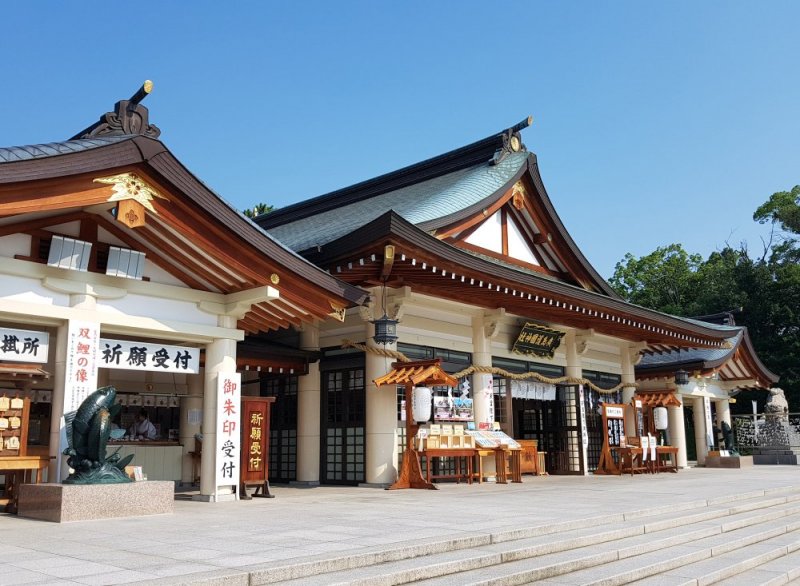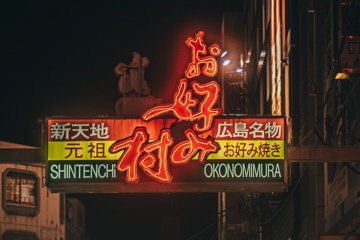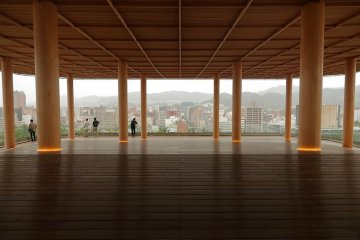
Gokoku Shrine
Located on the grounds of Hiroshima Castle, Hiroshima Gokoku Jinja (広島護国神社) is a Japanese Shinto Shrine in central Hiroshima City. "Gokoku" Shrines are Shin...

Hiroshima Castle, also known as Carp Castle, was originally built in the 1590s. It was destroyed by the atomic bomb along with the rest of the city in 1945 and rebuilt in 1958. Since then, it has also served as a museum of the history of Hiroshima before World War II The history of the castle itself, as well as Japanese castles in general, is clearly explained.
Hiroshima Castle's main keep will close on 22 Mar 2026, because the current construction does not meet modern earthquake safety standards.
As of mid-2025, discussions over any future reconstruction of the castle (e.g. a fully wooden but costly reconstruction) are ongoing.
Hiroshima Castle is a good example of a castle built on a plain in the center of a city as opposed to castles on hills and mountain tops. Its main tower is five stories high and its grounds are surrounded by a moat. Within the castle grounds there is also a shrine, some ruins and some reconstructed Ninomaru buildings (second circle of defense).
By train/streetcar: Hiroshima Castle is about a 10-minute walk north from the downtown area, including Kencho-Mae Station (Astram Line) or Kamiyacho-higashi stop (Hiroden streetcar).
Meipuru-pu sightseeing bus: The castle is also on the route for the Hiroshima sightseeing loop bus, Meipuru-pu, which starts from Hiroshima Station. The castle is a 6 minute ride and the second stop on the route.
By foot: The castle is about 10-15 minutes walk from both Peace Park and Shukkeien Garden. By foot, it can form part of an ideal day itinerary.

Located on the grounds of Hiroshima Castle, Hiroshima Gokoku Jinja (広島護国神社) is a Japanese Shinto Shrine in central Hiroshima City. "Gokoku" Shrines are Shin...

Okonomimura is a Hiroshima-style okonomiyaki theme park located in Shintenchi, Naka-ku, Hiroshima, near the east end of the Hondori shopping street. It has 24 okonomiyaki restaurants, each with a slightly different style and one different selection of ingredients. Okonomiyaki began in the pre-war period as a dish called "Issen Yoshoku" ("" Western food for a dime ""), which was very popular with common people. It consisted of a flour paste cooked with onions, dried shrimp, and spices. After the war, other ingredients such as cabbage, eggs, seafood, buckwheat and wheat noodles were used to improve the diet in these tough times. This is how today's Hiroshima-style okonomiyaki came about. [Photo: Victor Lee / CC BY-NC-ND 2.0]

Shukkeien Garden, located in central Hiroshima City, is a traditional Japanese-style garden loved by visitors and locals alike. This natural oasis among urban life provides a wonderful setting to slow down and rejuvenate among nature. Shukkeien Garden was completed in 1620 as a private garden for one of Hiroshima’s feudal lords (daimyo) and translates to “shrunken scenery garden” in Japanese. Although the garden was severely damaged in 1945 during WWII, it was completely restored to its former grandeur and is known as a National Place of Scenic Beauty. The Edo-period garden is cleverly landscaped to look like miniature mountains, valleys, rivers, bamboo groves, waterfalls, and forests. In the center of the garden, a carp-filled lake features multiple pockets of land that resemble islands. Plants pruned to look like tiny trees sprout from these islands and decorate the surrounding grounds. The pond’s stillness creates a mesmerizing reflection of the area’s natural hues and organic forms. The scenery shines brightest in springtime when the cherry blossoms are in full bloom, and in autumn when the foliage turns vibrant. The garden also has a small stone statue on its northern side to commemorate the people lost during the atomic bombing in 1945. You can view the expertly crafted scenery from a path around the perimeter of the park or in one of the garden’s many tea houses, which hold tea ceremonies year-round.

With its beautiful skylines and active waterways, Oizuru Tower offers its visitors a way to see all of that activity—day or night—unobstructed by glass or rails. The wooden floors and ceilings give off a gentle warmth and the pillars that support the ceilings also provide beams of light. Instead of glass or railings, guests can feel the Hiroshima air wash over them thanks to the stainless-steel net fence. With unobstructed views of Hiroshima, including the Peace Memorial Park and the Atomic Bomb Dome (and even Mount Misen of Miyajima on clear days), the tower offers viewers a way to feel at one with the city. Hiroshima Oizuru Tower is also home to an assortment of shops and cafés. Visit the first floor to find that special souvenir of one of Hiroshima’s local products at Hito to Ki. You’ll also find Hiroshima-style okonomiyaki in Akushu Café—including unique wrap-style okonomiyaki. On the 12th floor, you can also fold your own origami crane and leave it on the Oizuru Wall with your well wishes for the future. From the 12th floor to the 1st floor, there is a slide “cool-cool-cool” that runs alongside the spiral staircase. Why not try sliding your way down twelve floors—or just a couple, as you can exit in between floors. While you take a walk inside, browse the original comic created by Shuho Sato—manga artist of “Umizaru” and “Say Hello to Black Jack”—the works inside Oizuru Tower reflect on the theme of peace. No matter what you decide to do, you’ll be delighted by the spaces and experiences that you can create. Discover the past, present, and future of Hiroshima while you gaze out at this bustling city.

與和平紀念博物館一樣,廣島的原爆圓頂館作為和平的象徵,吸引許多來自世界各地的朝聖者。廣島變成一座美麗的城市,而圓頂館是市民們已恢復的證據:獨自站立,但又被現代的高樓大廈包圍。這是很驚人的畫面,同時提高了志氣。 我去的時候是11月的某個雨天,旁邊還有上百位參加校外教學的學生。雨水讓所有物變得新鮮又有生氣。從前的恐懼是事實,但現在懷抱更多的是希望。